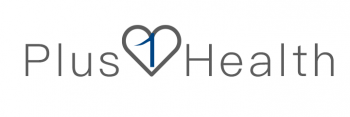In life, many people disapprove of snoring, and even think that snoring is a sign of sound sleep. In fact, one in every five snorers suffers from obstructive sleep apnea. If not taken seriously, it will often cause systemic damage such as high blood pressure, diabetes, mood changes, etc. It will also cause serious damage to pregnant women and fetuses. In severe cases, it may cause sudden death.
Sleep apnea syndrome is a sleep disorder characterized by repeated pauses in breathing during sleep. It is often overlooked in the early stages. In fact, it is not just as simple as snoring. It can affect sleep, reduce blood oxygen saturation, and further lead to high blood pressure. Blood pressure, coronary heart disease, cerebral infarction, cerebral hemorrhage, diabetes, respiratory insufficiency, may also lead to neuropsychiatric symptoms such as anxiety, depression, dementia, and even sudden death during late-night sleep.
Through the curve analysis of clinical monitoring data, it was found that the patient’s abnormal breathing event (apnea) must have occurred in the sleep state, which is also the patient’s sleep time. Continued observation found that apnea and blood oxygen saturation were highly correlated. In short, a certain length of apnea will lead to a significant drop in blood oxygen saturation. Therefore, apnea can be assessed according to the corresponding blood oxygen saturation index and apnea index, and then the risk during sleep can be evaluated.
The sleep respiration monitor can monitor blood oxygen at home. In addition to making it easier for patients to observe and adjust themselves at home, it can also wirelessly transmit it to professionals for continuous monitoring. Once blood oxygen is found to drop, it can guide patients online whether they need to increase the amount of oxygen. This is like the ECG hoter, which is continuously recorded by the instrument for 24 hours and integrated into the screening management of the disease, so that the patient does not need to go to the hospital, and the medical staff on the platform can give feedback and guidance to the patient.
Currently, portable sleep respiration monitors are widely used in clinical practice. Compared with traditional polysomnography, the biggest difference between portable sleep monitoring instruments is whether they can monitor sleep-related information, such as EEG, eye movement, EMG, nasal airflow, snoring, etc. For sleep information that cannot be monitored by portable monitoring equipment, the most important information for observing patients is breathing information, including the form of chest and abdomen breathing and blood oxygen saturation. Usually, if a snoring patient is accompanied by sleep apnea, based on clinical experience, it can be basically determined that the possibility of obstructive sleep apnea is high. By using a portable sleep monitor for out-of-hospital examination and in-ward monitoring, especially during the epidemic, It not only reduces the risk and makes the inspection process easier, but also does not miss the focus of monitoring. In addition, by monitoring blood oxygen saturation, a very important information can also be measured is the pulse. Changes in pulse and heart rate are closely related to the functional state of sympathetic autonomic nerves, and the regularity of changes in the functional state of autonomic nerves is closely related to the amplitude of respiration changes. In this way, through some special algorithms, the patient’s respiration information can be estimated, and sleep respiration monitoring can be performed. It is also a very important means.
In the clinic, patients with sleep-disordered breathing, dyspnea, daytime sleepiness, chronic obstructive pulmonary disease, and some possibly related cardiovascular and cerebrovascular diseases can be screened through this convenient wearable device to guide further clinical trials. Diagnosis and treatment. For medical staff, monitoring data can also be observed very intuitively, allowing doctors to grasp the situation of patients in time. Therefore, this wearable device for monitoring important information will have a wider range of clinical application scenarios. In recent years, wearable devices for sleep monitoring are usually used in sleep centers, snoring screening centers, and physical examination centers for initial screening of sleep apnea syndrome.
Plus1Health has the PLUS101 module. The PLUS101 module is a small module that can measure “ECG, blood oxygen, blood pressure, and heart rate” at the same time. It has built-in professional algorithms and open interface documents, which can quickly help customers develop products and applications that support “ECG, blood oxygen, blood pressure, heart rate” detect.
The PLUS101 ECG, blood oxygen, blood pressure, and heart rate modules are developed and designed by a professional medical device R&D team, and have undergone rigorous testing to meet medical-grade technical indicators and pass the medical device registration license. It is widely used in smart ECG watches, ECG bracelets, blood oxygen watches, blood oxygen bracelets, smart health detection and other product solutions.
